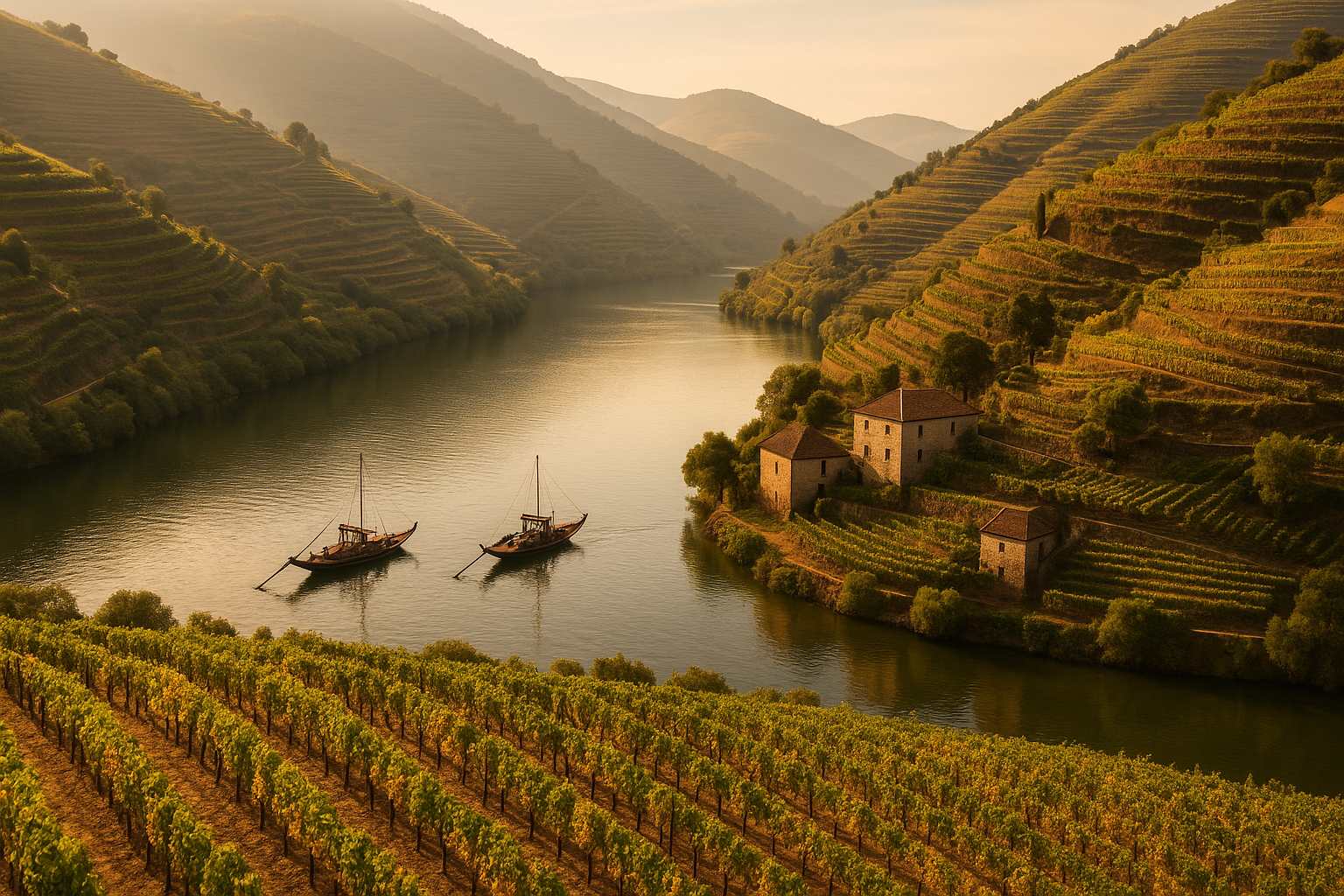Portugal offers a world of wine waiting to be discovered. While many know the country for its famous Port, its diverse landscapes produce an incredible array of other remarkable wines. From the steep, terraced vineyards of the north to the sun-baked plains of the south, each region tells a unique story through its grapes. This journey will guide you through the country’s most iconic wine territories.
The Majestic Douro Valley
The Douro Valley is arguably Portugal’s most famous wine region. It is also a UNESCO World Heritage site. The landscape is breathtaking. Steep terraces, hand-carved over centuries, cascade down to the winding Douro River. This region is the birthplace of Port Wine Heritage. However, its reputation for powerful, unfortified dry red wines is growing rapidly. Wineries, known locally as quintas, dot the hillsides, offering tastings with spectacular views.
Key grapes like Touriga Nacional, Touriga Franca, and Tinta Roriz thrive here. They produce deep, complex red wines with notes of dark fruit and spice. The region’s white wines are also gaining attention. They are typically fresh and aromatic. A visit to the Douro is an immersive experience. You can take a traditional rabelo boat cruise or drive the winding roads for unforgettable scenery. Many quintas offer tours, tastings, and even overnight stays, providing a true taste of Douro hospitality.

Alentejo: The Sun-Drenched Heartland
South of Lisbon lies Alentejo Wine Region, a vast and rustic region. It covers nearly a third of Portugal. Rolling plains, cork oak forests, and whitewashed villages define the landscape. The climate here is hot and dry. This allows grapes to ripen fully, resulting in rich, full-bodied red wines. These wines are known for their soft tannins and ripe fruit flavors.
Alentejo is also a leader in wine innovation. Many producers blend traditional techniques with modern technology. Some still use large clay pots, or talhas, for fermentation, a practice dating back to Roman times. This ancient method adds a unique character to the wine. The region’s main red grapes include Aragonez (Tempranillo), Trincadeira, and Alicante Bouschet. White wines, made from grapes like Antão Vaz, are often fruity and refreshing. Exploring Alentejo offers a slower pace, with opportunities to visit historic towns like Évora alongside your wine tasting adventures.
Vinho Verde: The Cool, Crisp North
In the lush, green northwest corner of Portugal, you will find the Vinho Verde region. The name translates to “green wine.” This refers not to its color but to its youth. These wines are meant to be consumed young. The region’s cool, damp climate produces wines that are light, crisp, and often slightly effervescent. They are incredibly refreshing, with high acidity and notes of green apple, citrus, and minerals.
The primary white grape here is Alvarinho, which creates more complex and aromatic wines. Loureiro is another important grape, known for its floral notes. While Vinho Verde is famous for its white wines, the region also produces light-bodied reds and vibrant rosés. A trip here feels like stepping into a different country. The landscape is green and dotted with granite villages. It provides a perfect contrast to the sunnier climes of Alentejo and the Douro.
Planning Your Portuguese Wine Adventure
Embarking on a wine tour through Portugal is an unforgettable experience. With a little planning, you can create a seamless and enjoyable journey. The country’s diverse regions offer something for every palate and travel style.
Getting Around
Renting a car offers the most flexibility. It allows you to explore remote quintas and charming villages at your own pace. The main roads are well-maintained. However, be prepared for narrow, winding roads in regions like the Douro Valley. If you prefer not to drive, hiring a private driver or joining a guided tour are excellent alternatives. In the Douro, you can also travel by train or boat. The Linha do Douro railway offers one of the most scenic train journeys in Europe, following the river from Porto.
Where to Stay
For a truly immersive experience, consider staying at a quinta. Many of these wine estates have been converted into beautiful guesthouses or hotels. This allows you to wake up among the vines and enjoy exclusive access to the winery. Wine hotels are another popular option. They combine luxury accommodations with a strong focus on wine culture, often featuring on-site spas, wine bars, and gourmet restaurants. You can find these options across all major wine regions, catering to various budgets.
A Sample 5-Day Itinerary: Douro & Porto
- Days 1-2: Porto. Start your journey in Porto. Explore the historic Port wine cellars in Vila Nova de Gaia for tastings and tours. Enjoy the city’s vibrant food scene and riverside views.
- Day 3: Travel to the Douro. Take the scenic train or drive to the heart of the Douro Valley. Check into your quinta. Enjoy a tour and tasting, followed by a traditional dinner.
- Day 4: Exploring the Valley. Visit two or three different quintas to compare their wines and styles. Consider a boat trip on the Douro River for a different perspective of the terraced vineyards.
- Day 5: Return to Porto. Enjoy a final breakfast in the valley before heading back to Porto for your departure. Portugal boasts a rich viticultural history. Portugal has over 250 native grape varieties, representing one of the most diverse collections of indigenous grapes in the world. This diversity is what makes exploring its wine regions so exciting.
